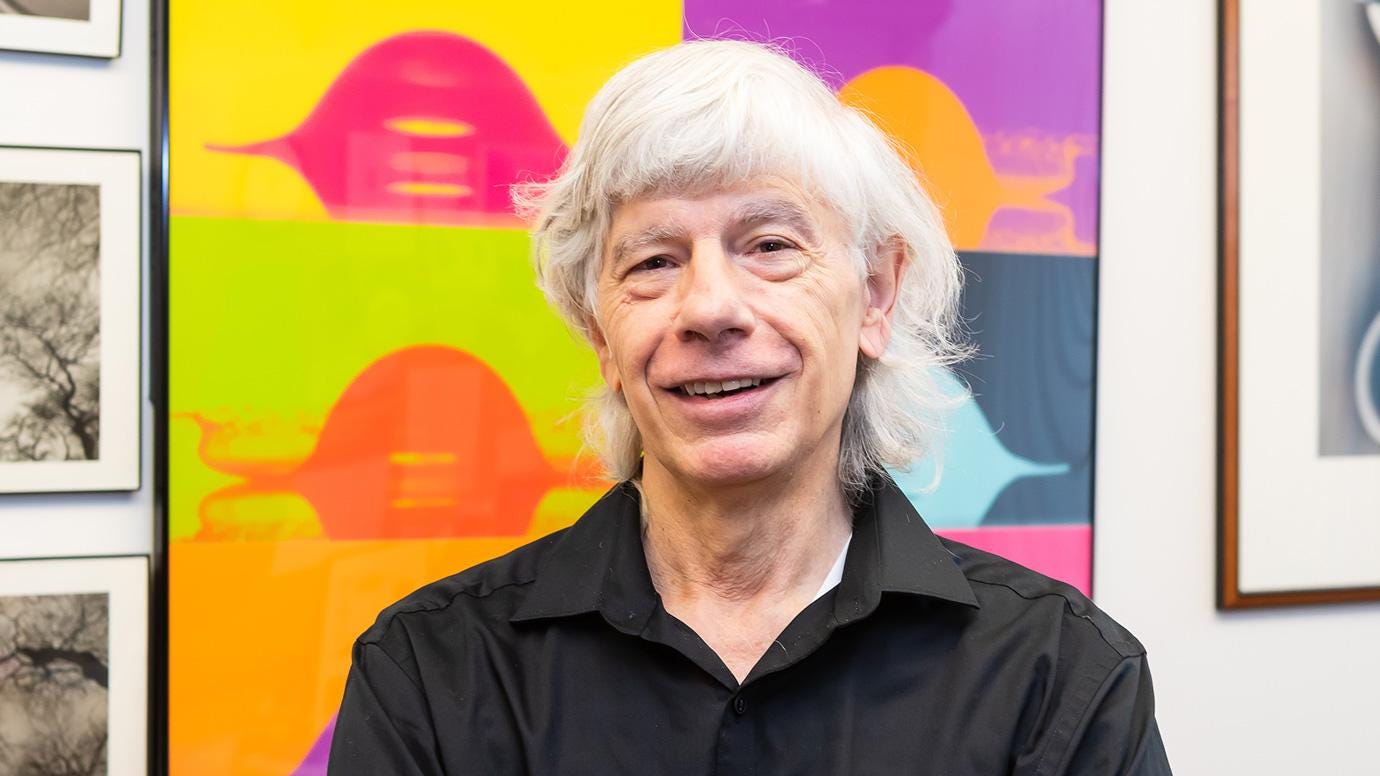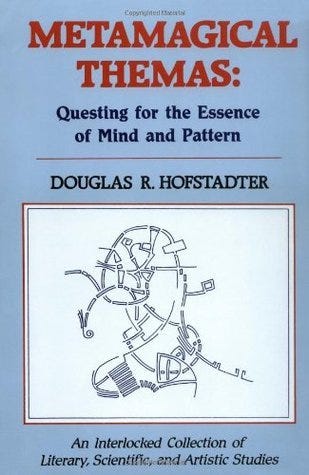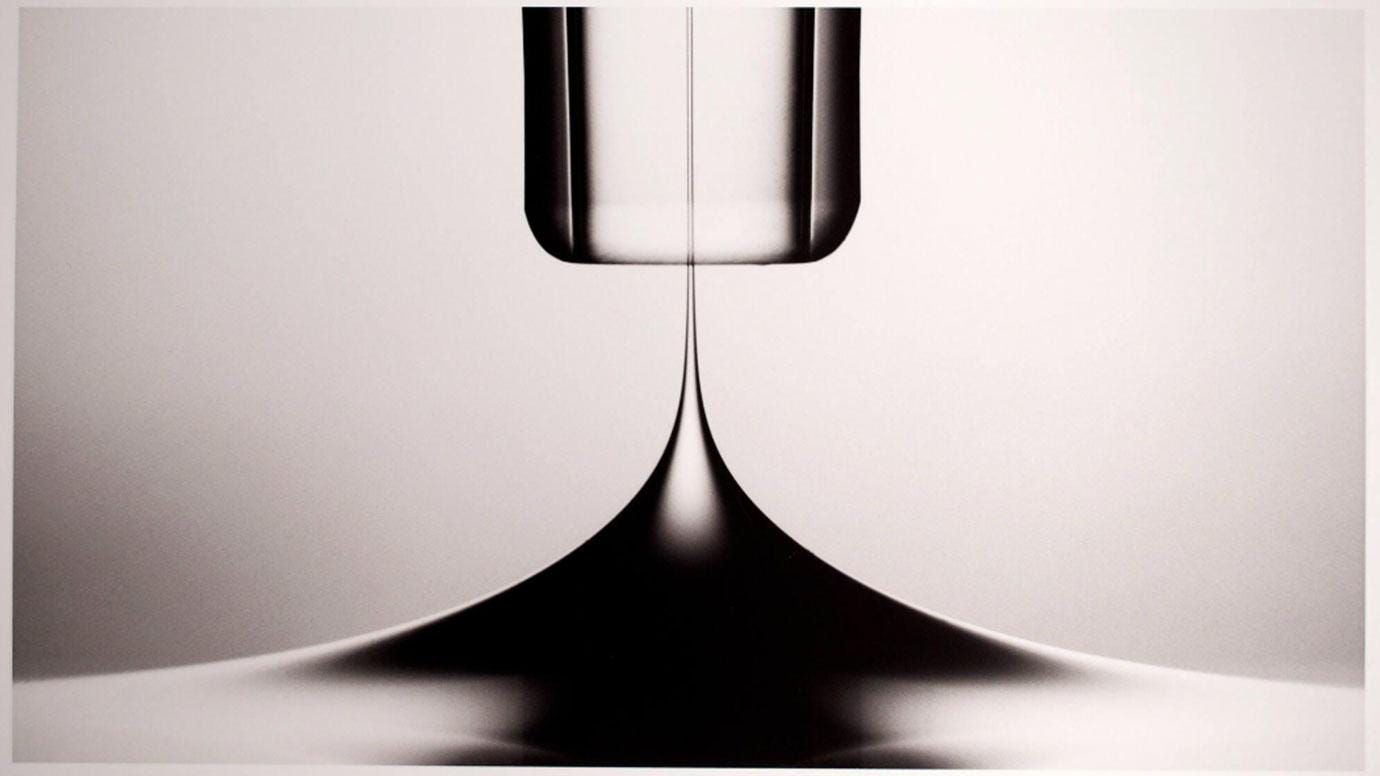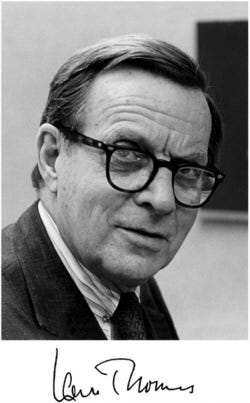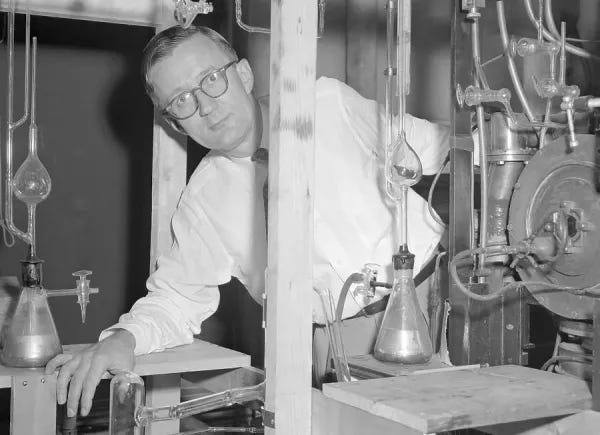This quarter at the University of Chicago, I’m taking Honors Electricity & Magnetism with Prof. Sidney Nagel. Turns out his father, Ernest Nagel, wrote the book Gödel’s Proof, which inspired Douglas Hofstadter to write Gödel, Escher, Bach (my favourite book). So I sat down with Prof. Nagel at his office, to pick his brains on everything from physics to his favourite scientists, and, of course, GEB.
MM: I want to begin by asking you about GEB and Douglas Hofstadter, how you first met him, etc.
SN: I was around 12 when I first met Douglas. Our family was visiting Stanford, where he lived. His father was the Nobel Prize winner, Robert Hofstadter. And I remember that Doug and my brother were all excited about mathematics and logic. And I was the younger kid looking up and not really understanding any of the words that they’re using, but sensing their excitement that this must be very deep stuff. But I hung around and listened because that’s what younger brothers do, I think.
And I remember we worked on some problem that they invented, and it escapes me now exactly what that problem was. But it was something to do with a recursive function, where we get the next term by looking at the previous terms. And it had some interesting properties which they were playing with.
And they were excited about this but I was just a young kid brother in the way. So, that was the first time we met, around 1960. Doug says something about that in his foreword to Gödel’s Proof.
And then we ran into him every once in a while, I guess, but then I saw him more when he was a graduate student at the University of Oregon. He was working on the problem that became what’s known as Hofstadter’s butterfly.
That was his thesis topic, as I recall. And then I ran into him, and he described some of that to me. I didn’t know that he was putting it all together in a book. So then a variety of these things all came together in GEB.
It was a lot about self-reference: Bach with his fugues, Escher with these fun drawings and Gödel with the proof, but tied in with these other kinds of questions which somehow referred to themselves.
MM: And I think he had some sort of Scientific American contest about the Prisoner’s Dilemma. He sent out a letter to 20 people and you had to explain whether you choose to cooperate or defect. He writes about this in Metamagical Themas,
Sidney Nagel was very displeased with his conclusion. He expressed great regret: “I actually couldn’t sleep last night because I was thinking about it. I wanted to be a cooperator, but I couldn’t find any way of justifying it. The way I figured it, what I do isn’t going to affect what anybody else does. I might as well consider that everything else is already fixed, in which case the best I can do for myself is to play a D (defect)”.
SN: Yeah, it’s a good problem. Why did I choose to defect? Well, if the job is to just do the best for yourself, and no one knows, then that’s the solution. The question is whether you believe everyone else could actually cooperate, but cooperation needs you to talk to people. You can’t cooperate alone. So it’s a dilemma. It shows you the world is a complicated one.
MM: On the first day of our class, you had mentioned that you were an English major, and you took this class on E&M. And, chapter 5 of Purcell’s E&M textbook compelled you to switch to physics. Can you recollect some of those memories and experiences, and how that happened?
SN: I started off as an English major, or that’s what I thought I was going to be, I was excited about literature. But then I wasn’t interested in what they said about the literature, and then I somehow also realized, oh, you have to be able to write well. So there were those things, and then I was looking for something else to be interested in.
And I took the honors physics class, which uses the same textbook of Purcell which we are using, albeit an earlier edition. It was a lovely book, and I hope people still find it lovely. The part that made it special for me was at chapter 5: the analysis of how the electric field lines transform and what this looks like.
I liked that, but I didn’t understand it very well. You know, I struggled with it and I didn’t know how to study physics very well at the time. And it wasn’t as if I did great in the course, but I thought hey, maybe I'll take another physics class. And so I didn’t switch over immediately, but then I had another class on E&M, and the teacher was wonderful, he really inspired me.
MM: You also said that Faraday is your hero, could you say more about that?
SN: Part of it is that of all the laws we’ve come up with in E&M, Faraday’s Law is perhaps the prettiest. It just makes you go ‘Wow, nature does that. Wow, look at that. Isn’t that neat?’
And then you stick around physics, and we started looking at physics and dynamics of sandpiles. And lo and behold, Faraday had looked at that too in his own way. So he was just a very curious physicist whose mind was open to all the phenomena at the time, and it didn’t matter whether it was one subject or another. We hadn’t pigeonholed things at that time into this sub-field or that sub-field. Faraday looked at all these different things.
And then I also appreciated the fact that he was kind of a self-taught person. I don’t think he had a great mathematical education, but his way of dissecting a problem was in an experimental realm, which is beautiful.
But by looking and looking and looking very carefully he was able to come up with these deep concepts such as a field. And the reason we know about fields is Faraday.
MM: You also said once in class that the optical properties of an object, how it appears, relates to its thermal and electrical properties. Could you say more about that?
SN: [Holds two forks, one metal and one plastic]. What are these? They’re two forks. But I’m looking at them, and this one reflects back at me, and the other one I can see through.
Just by looking at it, I know something about it. If I stick [the metal fork] into an electric outlet, I will kill myself. If you have something that looks like this [plastic fork], if I stick it into an electric outlet, I will not kill myself.
So just by how this thing looks, I can tell the difference. So this tells me that the electrical properties are somehow related to the optical properties. And then you also know that if I stuck this into boiling lead, [with the plastic fork] I won’t burn myself, whereas with this [metal] one, I will.
Oh, so that means that the optical properties also affect the thermal process. So these things are all related. And when I was writing up my PhD thesis, I remember thinking about that, so I wrote that down in the introduction to my thesis.
MM: Your office is a beautiful collection of many different things, I’m curious if you have any hobbies outside of physics.
SN: Yes! I enjoy woodworking. I just think carpentry is beautiful, and it’s nice and it smells good, it feels good. So I was trying to build things. And when research isn’t going well and you have a hobby like that, then you think about that instead of your research, and it gives you an outlet for still trying to be creative.
Then as part of my fluid mechanics research I got very interested in photography. So I spent a lot of time trying to really make the images as special as I could because it’s not just the intellectual question of the science. We are not just scientists but also humans. And we humans respond to the science, of course, but also to the aesthetic qualities.
Then, unfortunately, the world went digital, and digital photography doesn’t appeal to me as. With the analog stuff you would go into your dark room and you get all these chemical smells on your fingers and I love that.
And then, during the pandemic, we were all stuck at home, and so I tried to write poems about physics. And again, like all my hobbies, that went on for a while and then stopped. And now I’m hoping that something else will get me excited.
In terms of writing, the one writer who I would like to emulate, if it were possible, is a biologist who was around in the 60s and 70s. His name is Lewis Thomas, and he wrote books and essays about biology. Many books are trying to teach you something. But what I liked about Lewis Thomas is that he simply helps you appreciate something.
MM: In your interactions with all these leading physicists, are there any anecdotes that stand out?
SN: Well, the anecdote that stands out to me is about Purcell, whose textbook we are using. I got to meet Purcell. He came to Chicago to give a talk once. I arranged a dinner with him and my research group.
By the way, I had a cat who I had named after Purcell. Purr-cell is a good name for a cat. I didn’t tell him that I named the cat after him, because I wasn’t sure whether he would be happy or offended. But the story he told us over dinner was very good.
So Purcell’s main research was on nuclear magnetic resonance (NMR). And then there’s another physicist who was actually my teacher, for the second E&M class I took, who is also a Nobel Prize winner, Polykarp Kusch. And Kusch was also an experimentalist, and he got the Nobel for precision measurements of the magnetic moment of the electron and muon. These were very high-precision experiments.
And one time Kusch went to see Purcell’s lab in Harvard. And there was a vacuum can in the middle with a bunch of wires. So Kusch was looking at this, and there were red globs on it. Back in those days vacuum technology wasn’t what it is today and there was a tiny leak in the can. We would use something called Glyptal, which was a kind of red paint that would somehow help clog up the leaks.
And Kusch was looking at this, and this was magnetic resonance, remember. And Kusch asks, I wonder why that stuff is red. And he asked, what would be red? Well, iron oxide would be red. Iron has strong magnetic properties.
So here he was doing these experiments on NMR, he’s painting iron stuff on top of it and he hadn’t thought about it. Purcell said “it never would have occurred to me to ask that question”, but Kusch asked the question because he’s interested in all these ways that experiments can go wrong. If you’re gonna do a precision experiment, you have to get all these little things right.
And this story shows that there are many different kinds of physicists. One can be really good at something, and another can be really good at something else, and they don’t have to be the same things. And there’s a role for each of them in physics.
And so Kusch was a great physicist doing precision measurements, Purcell was also great in doing a very different kind of physics. And neither of them could have done what the other one did.
Feedback and reading recommendations are invited at malhar.manek@gmail.com




